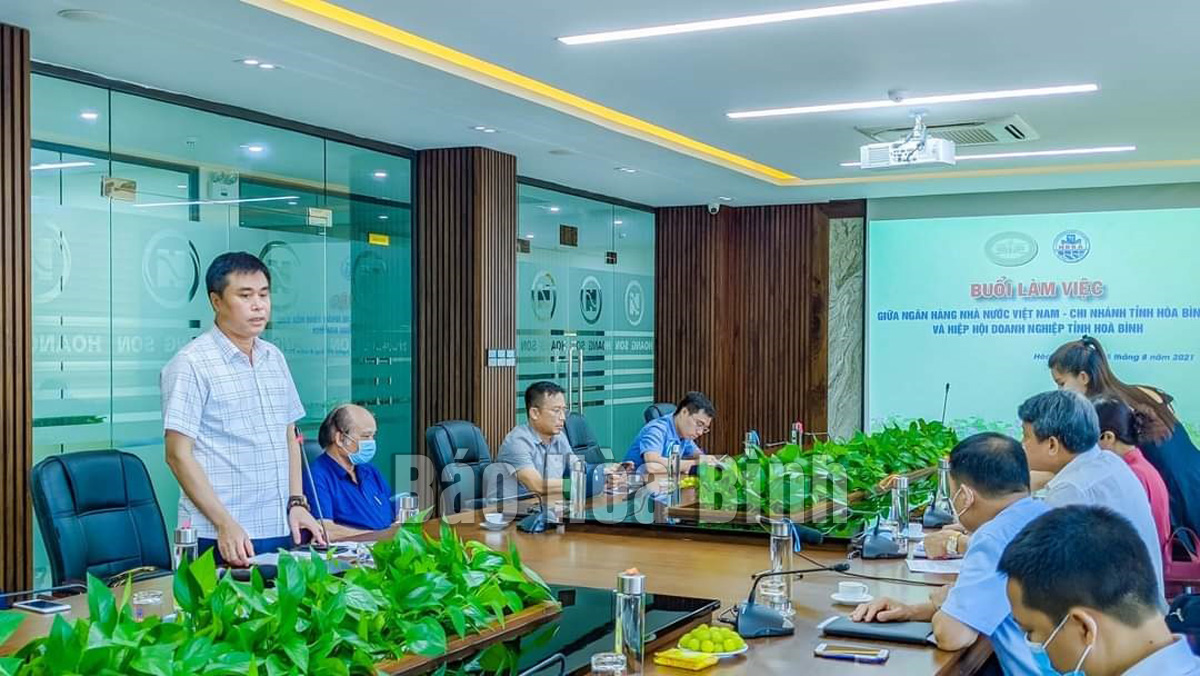
(HBO) - The provincial Business Association and the State Bank of Vietnam's Branch in Hoa Binh province hold a meeting on August 5 to discuss solutions to remove difficulties for businesses affected by the COVID-19 epidemic.
Photo: Representatives of the provincial Business
Association suggested the implementation of preferential credit policies to
support businesses to overcome difficulties.
At the meeting, representatives of the provincial Business Association and
enterprises agreed that given complicated developments of the COVID-19
pandemic, companies face a lot of challenges. Many enterprises had to suspend
operations.
Enterprises proposed a number of recommendations to remove difficulties,
including increasing debt restructuring time, expanding the list of
beneficiaries of incentives for extension, postponement, and reduction of
interest rates for enterprises operating in the fields of investment,
construction and real estate.
It was necessary to consider reducing the interest rates to the maximum level
for all loans at banks as currently, some banks have reduced while others have
reduced a little or not yet doing so. The guarantee fees and loan commitment
fees should also be lowered. There should be a flexible mechanism in medium and
long-term loans secured by assets formed in the future.
The collaterals at banks as real estates should be re-evaluated to be relevant
to the market so that enterprises have the opportunity to borrow more capital
while administrative procedures should be simplified to facilitate businesses
access to the 26-trillion VND support package, the businessespeople said.
They asked for the removal of collaterals for loans for construction works
funded by public investment capital when a decision on capital allocation has
been made. The implementation of activities to support businesses affected by
the COVID-19 pandemic should be sped up, they added.
Leaders of the State Bank of Vietnam (SBV)’s Branch in Hoa Binh province
exchanged and shared difficulties that businesses were facing and received
suggestions to study and report to the SBV for solutions to solve their
problems.
In the coming time, the SBV will continue to direct commercial banks and credit
institutions to effectively implement activities to support businesses affected
by the COVID-19 pandemic and organise a signing ceremony on coordination
regulations between the SBV’s Branch in Hoa Binh and the provincial Businesses
Association to ease difficulties for enterprises.
According to data from the Hoa Binh Provincial Party Committee, the industrial production index for the first six months of 2025 is estimated to have increased by 20% compared to the same period last year. This marks the highest year-on-year growth rate for this period since 2020.
In the first six months of 2025, Hoa Binh province’s export turnover was estimated at 1.145 billion USD, marking an 18.11% increase compared to the same period in 2024. Import turnover was estimated at $ 804 million, a 17.15% increase, which helped the province maintain a positive trade balance.
The lives of the ethnic minority farmers in Tan Lac district have gradually improved thanks to the new directions in agricultural production. This is a testament to the collective strength fostered through the professional associations and groups implemented by various levels of the district’s Farmers’ Union.
With the motto the "product quality comes first,” after nearly one year of establishment and operation, Muong village’s Clean Food Agricultural and Commercial Cooperative, located in Cau Hamlet, Hung Son Commune (Kim Boi district), has launched reputable, high-quality agricultural products to the market that are well-received by consumers. The products such as Muong village’s pork sausage, salt-cured chicken, and salt-cured pork hocks have gradually carved out a place in the market and they are on the path to obtaining the OCOP certification.
In the past, the phrase "bumper harvest, rock-bottom prices" was a familiar refrain for Vietnamese farmers engaged in fragmented, small-scale agriculture. But today, a new spirit is emerging across rural areas of Hoa Binh province - one of collaboration, organisation, and collective economic models that provide a stable foundation for production.
Maintaining growing area codes and packing facility codes in accordance with regulations is a mandatory requirement for agricultural products to be eligible for export. Recently, the Department of Agriculture and Environment of Hoa Binh province has intensified technical supervision of designated farming areas and packing facilities to safeguard the "green passport" that enables its products to access international markets.



